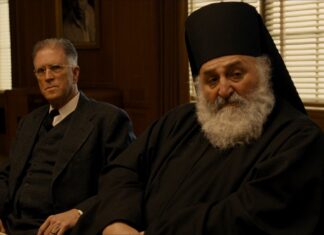YEREVAN/SOFIA — Kosta Karakashyan is a Bulgarian-Armenian director, producer, choreographer, and writer. A native of Plovdiv, Bulgaria, he started training in ballroom dance at age five before winning two Bulgarian National Ballroom Champion titles, dancing on international stages across Canada, Germany, Norway, Egypt, Vietnam and Japan, and becoming the youngest professional dancer and choreographer on “Dancing with the Stars Vietnam” at 18 years old. Kosta is a graduate of Columbia University in New York (BA in Dance) and the Global Campus of Human Rights (European Master’s) in Venice.

His directing and choreography include films, music videos, commercials, installations, theatre and immersive performances produced alongside his production company Studio Karakashyan and multidisciplinary dance company Karakashyan and Artists. A two-time Bulgarian National Ballroom Champion, Kosta was selected as one of the Berlinale Talents in 2024 and as Forbes Europe 30 Under 30 2024 honoree in the Arts and Culture category for his commitment to tackling human rights through his art.
His films include “A Real Boy,” “In Her Skin,” “Surrender,” “Supersexual,” “Glance from the Edge” and “Waiting for Color.” As a commercial director, his recent clients include H&M, Calvin Klein, ELLE, iYura, Bellissimo Clinic, Studio Zard, etc.
Kosta also teaches improvisation, contemporary technique, camera performance, and dance film workshops around Europe. He is a contributing writer to various publications, writing essays and dance criticism in international periodicals. He just finished production on his upcoming short film “They,” which tells a love story between two university professors who are forced to keep their relationship a secret, and will be starting its festival run in the beginning of 2025.
Dear Kosta, first I knew about you after your participation in “Bulgaria’s Got Talent 2021.” Your dance impressed me with high emotional drive and brilliant choreography. Where do you find your inspirations in creating choreographic pieces?
Thank you for the kind words! For me choreography needs either a strong message or a pure, distilled emotion that you can feel clearly coming through the movement without being melodramatic. I am always looking through my emotional memory for bits of inspiration, and even if I am choreographing something that is not autobiographical, I always try to capture a distinct feeling from my own life in the work because I feel these authentic lived experiences can make the tapestry of any piece of art that much richer. In the case of the “Bulgaria’s Got Talent” performance, it had to do with the feelings of burnout and mental strain that I felt as a student in the US and how these sensations reverberated through my body.









